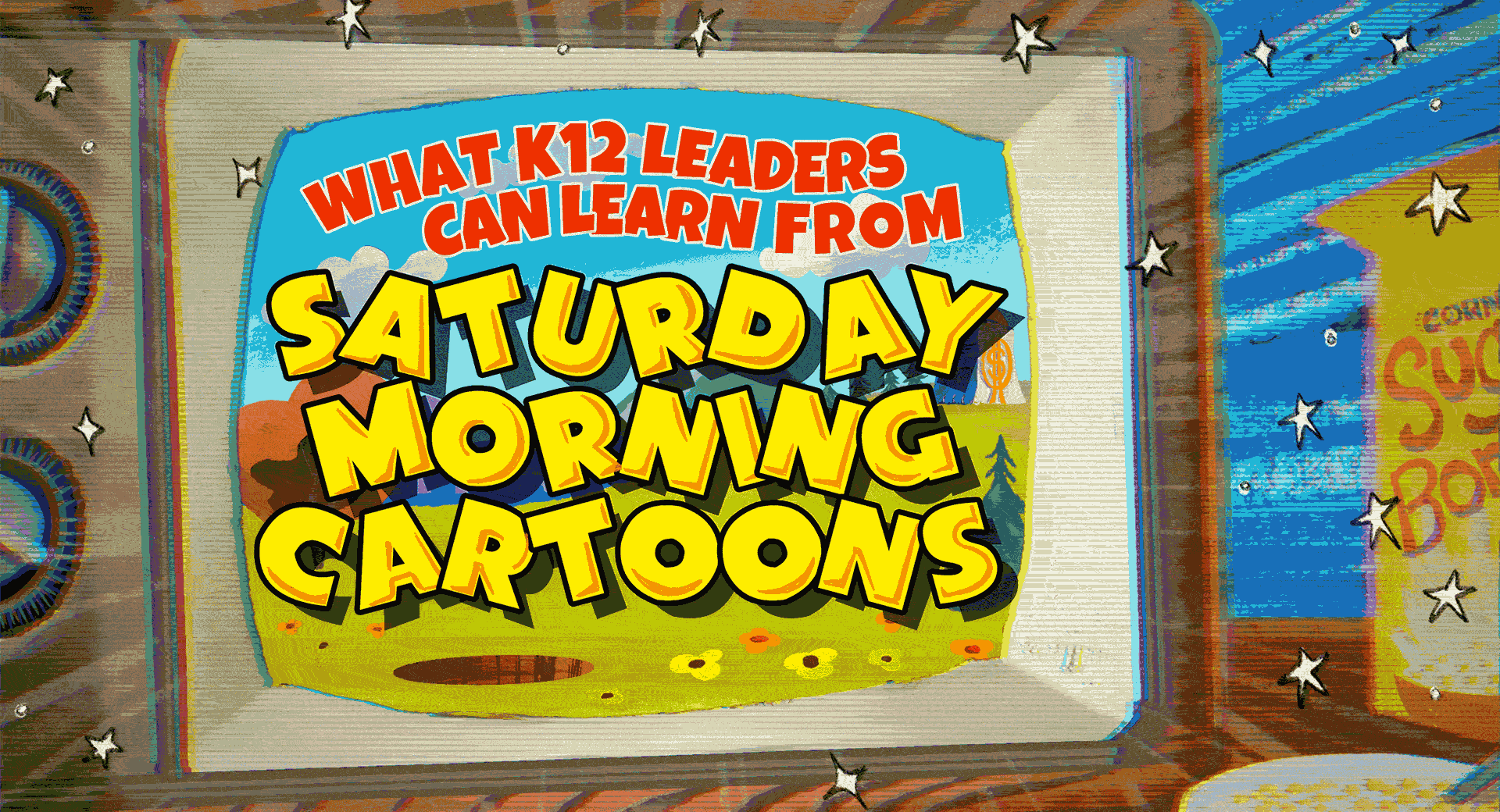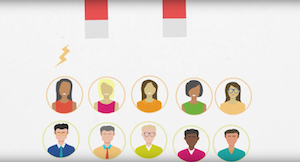
There’s just something special about the nostalgia of Saturday morning cartoons.
Flashy colors. Quotable moments. Commercials featuring a “balanced” meal with enough calories to sustain a child for days. PSAs that toed the line between informative and soap opera.
What can school leaders learn from this cultural phenomenon? Pour a bowl of sugary cereal and let’s explore.

Engagement
Saturday morning cartoon blocks were designed specifically to hook kids’ attention. From the programs to the toy commercials, it was all tailor-made for kids’ enjoyment. This type of engagement looks effortless but comes from the deep study of what works and what doesn’t.Now, we don’t have time to dive into weeks and weeks of focus groups like the marketers of yore. What we can do is learn from the educators who seem to effortlessly engage students in learning. These may be educators in your district or outside it—in that case, look at their social media feeds and you’ll see the fruits of focusing on engagement.
Why does it matter so much? Increasing engagement means educators can impart more information quickly. The struggle to capture attention is no longer sapping energy.

Sleight of hand
Like it or not, by modern screen time standards, Saturday morning cartoons became a phenomenon partially due to the way an entire morning would slip away as kids watched.Anyone who has been in the presence of a child knows they can tell when we’re eager to get them to do something—and once that secret is out, we’re done for. There’s an art to maximizing engagement without kids being aware they’re spellbound by learning. One approach comes from increasing student choice and agency. The more students feel they’re in control, the more engaged they’ll be.

Kid-sized information tidbits
As time passed, Saturday morning cartoons introduced additional elements to the ACME-sponsored entertainment. Public service announcements (PSAs) cemented their own place in the collective psyche of children of the 1980s and beyond. These PSAs took heavy topics and reimagined them into easily digested, memorable lessons for kids to absorb in a low-pressure setting.The quick, concise nature of these ads capture a form of branding wisdom: Make your lesson short, catchy, and repeatable. Can every lesson meet these guidelines? Probably not. Will kids remember if you do manage to nail it? You bet. After all, knowing is half the battle.

Wildness
Cartoons are fun. Cartoons don’t make sense. Cartoons get wild. Is there anything more captivating when you’re a little kid navigating the world for the very first time?A little wildness doesn’t hurt in the right context. Of course, we’re not suggesting we neglect safety and security in schools. The sit ‘n’ get, grid-style, black-and-white lecture has its time and place, but letting loose and embracing creativity—and wildness—might just surprise kids with how much they can achieve when it feels fun. We don’t know: how many jellybeans could fit into the moon? Maybe finding out would make math a little wilder for the day, maybe it wouldn’t be the most sensible assignment... and it sure would be fun to find out. (PS: It’s an insane number, and they did the math.)

The core takeaway
Kids got to run the show Saturday mornings. In that moment, they were royalty. They called the shots, and everything was crafted to be just the way they’d like it. While those days are over for multiple reasons, the cultural phenomenon remains. It shows us the true power of student choice and agency on engagement and motivation.A little bit of sugary cereal might help, too.
Follow-up resources: Design thinking
Curious how to train your brain to be a little more outside the box? Take a look at Design Thinking for School Leaders.WHAT'S NEXT FOR YOUR EDTECH? The right combo of tools & support retains staff and serves students better. We'd love to help. Visit skyward.com/get-started to learn more.

|
Erin Werra Blogger, Researcher, and Edvocate |
Erin Werra is a content writer and strategist at Skyward’s Advancing K12 blog. Her writing about K12 edtech, data, security, social-emotional learning, and leadership has appeared in THE Journal, District Administration, eSchool News, and more. She enjoys puzzling over details to make K12 edtech info accessible for all. Outside of edtech, she’s waxing poetic about motherhood, personality traits, and self-growth.




